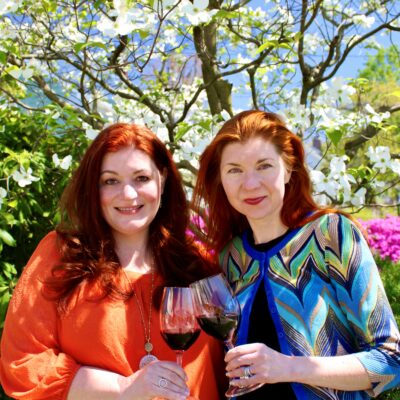Far be it from us to play favorites with grape varieties, but it’s impossible to ignore the Empire State’s emerging star grape, Cabernet Franc.
Riesling hogged the headlines and the critical acclaim in the state for decades, but thanks to a delicious cocktail of developments—including improved clones and viticultural techniques, and the auspicious pairing of grape and terroir—Cabernet Franc is now able to begin to compete with Riesling for star status in the minds of vintners and wine enthusiasts alike.
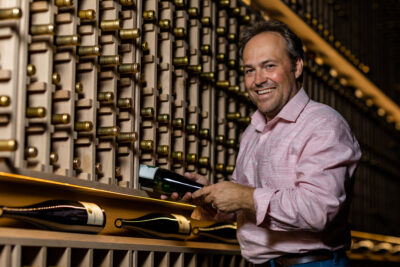 “Riesling has been here for a long time, and has 40 to 50 years under its belt already,” says Oskar Bynke, estate manager and head of marketing for Hermann J. Wiemer Vineyard on Seneca Lake in the Finger Lakes. “The catchup of quality for Cabernet Franc has not been an overnight process, because there are so many older vineyards with Riesling and so much more experience in terms of how we farm and produce the wines. But we are finally at the point where we are getting there.”
“Riesling has been here for a long time, and has 40 to 50 years under its belt already,” says Oskar Bynke, estate manager and head of marketing for Hermann J. Wiemer Vineyard on Seneca Lake in the Finger Lakes. “The catchup of quality for Cabernet Franc has not been an overnight process, because there are so many older vineyards with Riesling and so much more experience in terms of how we farm and produce the wines. But we are finally at the point where we are getting there.”
With technology and improved clonal material, Cabernet Franc is ready for the spotlight, Bynke adds.
Improved Viticulture, Auspicious Terroir
Cabernet Franc is undeniably on the rise across the state.
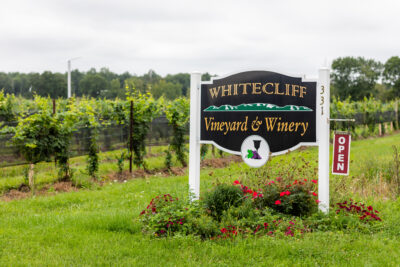 “During our years in business, we have seen more and more Cabernet Franc planted across the states,” says Yancey Stanforth-Migliore, co-founder of Whitecliff Vineyard in Gardiner, which just celebrated its 25th anniversary in July. “Our own region’s efforts to brand the Hudson Valley as specializing in the grape are underway,” she adds, in reference to the Hudson Valley Cabernet Franc Coalition, a 501(c)6 nonprofit that was launched in 2016.
“During our years in business, we have seen more and more Cabernet Franc planted across the states,” says Yancey Stanforth-Migliore, co-founder of Whitecliff Vineyard in Gardiner, which just celebrated its 25th anniversary in July. “Our own region’s efforts to brand the Hudson Valley as specializing in the grape are underway,” she adds, in reference to the Hudson Valley Cabernet Franc Coalition, a 501(c)6 nonprofit that was launched in 2016.
The Coalition’s mission is to showcase and elevate the many terroir-driven Cabernet Francs produced by winemakers in the Hudson Valley, and to promote the planting of more vines in thoughtfully selected areas.
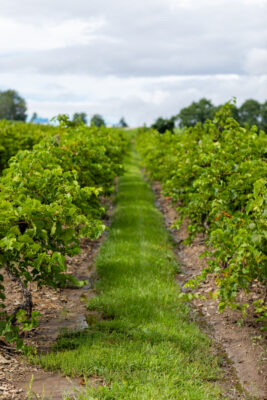 Stephen Taylor, sales manager at Bully Hill Vineyards in Hammondsport, says the Coalition is helping raise Cabernet Franc’s profile across the state.
Stephen Taylor, sales manager at Bully Hill Vineyards in Hammondsport, says the Coalition is helping raise Cabernet Franc’s profile across the state.
“The Coalition has done a terrific job in promoting the quality and regionality of the state’s Cabernet Francs,” he says. “In New York, we grow so many different varieties, from American heirlooms, French American hybrids, New World hybrids and vinifera, it can be confusing to the average consumer. Marketing and name recognition are important when a wine is on a shelf, so it makes sense to give a red like Cab Franc the spotlight.”
Ian Bearup, winemaker and VP of production at Millbrook Vineyards and Winery in the Hudson Valley, says the grape is becoming synonymous with great wine across New York.
“Cabernet Franc is the hands-down premier red grape in the Hudson Valley and the Finger Lakes,” he says. “With minimal vines dying from cold stress during the winter it is also economical for us. It handles long hang times into October, which allows it to develop some impressive aromas and well-structured mouthfeel.”
Roman Roth, winemaker and partner at Wölffer Estate in Sagaponack, argues that Cabernet Franc is also ideal for Long Island.
“Cabernet Franc is an outstanding variety, especially in our maritime climate on Long Island,” Roth says. “The variety is winter hardy and our long growing season is ideal to ripen the fruit and make concentrated Cabernet Franc. The cooler ocean breezes ensure that we stay elegant and balanced, with alcohol levels of 13.5%.
Fred Merwath, head winemaker and co-owner of Hermann J. Weimer, explains that the winery also has a 10-acre nursery that includes older selections and new plantings, and says that they are focused on clonal research that they believe will further improve Cabernet Franc quality.
“We have been growing Clone 327 from Bordeaux for 25 years,” he says. “And in the past 15 years, I’ve been experimenting with plant material from the Loire Valley, mainly with Clone 214. There’s a wide range in terms of ripeness and pyrazine levels with these two clones, and we’ve been really curious to explore other clones as well that may address climate change challenges, and changing preferences in terms of people wanting lower ABV wines with less concentration and power.”
Right now, the team is working with a promising set of clones that reflect the new lower-sugar, lighter paradigm.
A Most Flexible Grape
Part of Cabernet Franc’s appeal for vintners in both the field and cellar is its flexibility.
“I love Cabernet Franc because it’s so versatile,” says Brad Martz, the winemaker at Whitecliff. “Cabernet Franc can be fermented like a white, to make a Blanc or traditional method Blanc de Noir. After 24 to 36 hours of skin contact, it makes up a large component of our dry rosé, and I have made experimental lots of Cabernet Franc Pet-Nat and a sparkling red done in the traditional method.”
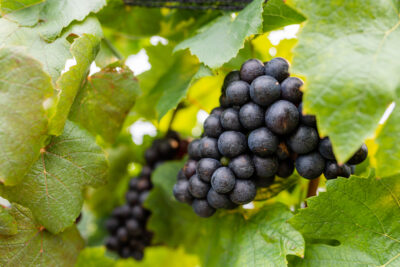 As a red, he adds, several wineries are producing unoaked or stainless-steel fermented Cabernet Francs, although many vintners like him take a more traditional approach, aging the wines in French oak barrels or puncheons.
As a red, he adds, several wineries are producing unoaked or stainless-steel fermented Cabernet Francs, although many vintners like him take a more traditional approach, aging the wines in French oak barrels or puncheons.
Cabernet Franc is conducive to hanging for a long time, or a short time, depending on the wine goals.
“We are finding that Cabernet Franc is doing really well in our rosé blend,” says Bynke. “We blend it with Pinot Noir and Blaufränkisch, as well as using it for our ageable single vineyard red expressions. We’re falling in love with Cabernet Franc, and we’re finding that we can create a version that connects much more with lighter versions typical of the Loire and Chinon, than more exuberant New World expressions.”
Critical and Popular Adulation
Winemakers are clearly obsessed with Cabernet Franc. But that alone doesn’t make for a wild success.
Thankfully, critics agree. Wine Enthusiast gave Whitecliff’s current estate-grown vintage 90 points, and an earlier vintage snagged a double gold at the San Francisco International Wine Competition.
 At Wölffer Estate, the Caya Cabernet Franc has received several 90-point ratings in Wine Spectator and Wine Enthusiast, and Millbrook’s current 2021 Cabernet Franc PSR just snagged 92 points from Wine Enthusiast.
At Wölffer Estate, the Caya Cabernet Franc has received several 90-point ratings in Wine Spectator and Wine Enthusiast, and Millbrook’s current 2021 Cabernet Franc PSR just snagged 92 points from Wine Enthusiast.
They all say that many visitors are now (finally!) asking for Cabernet Franc specifically in their respective tasting rooms.
“We have noticed an uptick from visitors catching on to this varietal and specifically seeking it out,” Taylor notes.
New York’s love affair with Cabernet Franc has been slow to build, but it is poised for a long, delicious road ahead.

